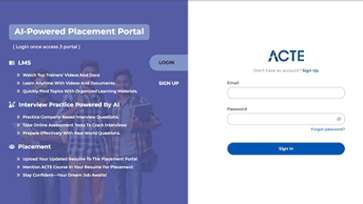Additional Info
Why do we need Software Testing?
Now I say it is an art to assess the functionality of a software application with an intent to find whether the developed software meets the specified requirements or not and to identify the defects to ensure that the product is defect-free to produce a quality product. As per the modern trend, due to constant change and development in digitization, our lives are improving in all areas. The way we work has also improved.For instance, we reach our bank online, we shop online, we order food online, and many more. We rely on software and systems.To deliver a quality product, we need to have tested it in the Software Development Process.Some of the reasons why testing grew a very significant and integral part of the field of information technology are as follows.
- Cost-effectiveness
- Customer Satisfaction
- Security
- Product Quality
Cost-effectiveness:-
It design defects can never be completely ruled out for any complex system.It is not because developers are careless simply because the complexity of a system is intractable.If the design issues go undetected, then it will grow more difficult to trace back defects and rectify them. It will become extra expensive to fix it.Sometimes, while fixing one bug we may introduce a different one in some other module unknowingly. If the bugs can be identified in the initial stages of development then it costs much less to fix them.That is why it is necessary to find defects in the early stages of the software development life cycle.One of the advantages of testing is cost-effectiveness.It is better to start testing earlier and include it in every phase of the software development life cycle and regular testing is needed to ensure that the application is produced as per the requirement.
Customer Satisfaction :
In any business, the end goal is to give the best customer satisfaction. Yes, customer gratification is very important.Software testing enhances the user experience of an application and gives satisfaction to the customers. Happy customers could mean more income for a business.
Security :
This is probably the most sensitive and unprotected part of testing. Testing (penetration testing & security testing) helps in commodity security.Hackers gain unauthorized admittance to data. These hackers steal user information and use it for their gain. If your product is not guarded, users won’t prefer your product. Users always look for trusted products. Testing helps in eliminating vulnerabilities in the product.
Product Quality :
Software Testing is an art that helps in establishing the market reputation of a company by delivering a quality product to the client as mentioned in the requirement specification documents.Due to these reasons, software testing has become a very significant and essential part of the Software Development process.A Vital Way to Enhance a Software Tester testing is required to provide consumers with services such as the delivery of a high-quality product or software application that needs less maintenance and thereby produces more accurate, consistent, and reliable results. A high-quality product is less likely to have defects and needs less maintenance, resulting in lower costs. It is important to ensure that the application does not fail because delays can be very costly in the future or later stages of production. Testing ensures that bugs and faults are discovered early in the product or application life cycle.
What are the different types of Software Testing?
Manual Testing :
Manual testing is the method of testing the software by hand to learn more about it, to find what is and isn’t working.
This usually includes checking all the features specified in requirements documents, but often also includes the testers trying the software with the perspective of their end users in thought.Manual test plans range from fully scripted test cases, giving testers detailed steps and expected results, through to high-level models that steer exploratory testing sessions.
There are lots of advanced tools on the market to help with manual testing, but if you want a simple and flexible place to start, take a look at Testpad.
Automation Testing :
Automation testing is the method of testing the software using an automation tool to find the defects. In this process, testers perform the test scripts and generate the test results automatically by using automation tools. Some of the famous automation testing tools for practical testing include Selenium and Katalon Studio. Selenium isn't a strange name for web application testers anymore. It allows powerful capabilities like cross-browser testing but is difficult to learn for those new to automation or with limited programming experience. That’s why most QAs freshers and manual testers start with Katalon Studio. While still giving essential features from Selenium, users can utilize its simple UI, built-in keywords, and record & playback to create test cases easier and pick up programming jobs on the way with the scripting mode (Java and Groovy supported).
Testing Methods :
1. Static Testing.
2. Dynamic Testing.
- Static Testing :
It is also recognized as Verification in Software Testing.
Verification is a static method of reviewing documents and files. Verification is the process, to ensure that whether we are making the product right, to verify the requirements which we have and to verify whether we are developing the product accordingly or not.
Activities included here are Inspections, Reviews, Walkthroughs.
- Dynamic Testing :
It is also identified as Validation in Software Testing. Validation is a progressive process of testing the real product. Validation is the process, whether we are building the right product, to confirm the product which we have developed is right or not.Activities included in this is Testing the software application (Desktop application, Web application, Mobile Apps)
Testing Approaches :
There are three main types of software testing approaches.
1. White Box Testing
2. Black Box Testing
3. Grey Box Testing
White Box Testing :
It is also named Glass Box, Clear Box, Structural Testing. White Box Testing is based on the application’s inner code structure. In white-box testing, an internal perspective of the system, as well as programming skills, are used to create test cases. This testing is normally done at the unit level.
Black Box Testing :
It is also described as Behavioral/Specification-Based/Input-Output Testing. Black Box Testing is a software testing method in which testers assess the functionality of the software under test without looking at the internal code structure.
Grey Box Testing :
The grey box is the mixture of both White Box and Black Box Testing. The tester who works on this type of testing requires access to design documents. This assists to create better test cases in this process.No matter if you are a Black box, White box, or Grey box tester. The completion of a project due to software testing in Software Engineering has a huge role.
Testing Levels :
1. Unit Testing
2. Integration Testing
3. System Testing
4. Acceptance Testing
- Unit Testing:
Unit Testing is done to check whether the specific modules of the source code are working properly. i.e. testing every unit of the application separately by the developer in the developer’s environment. It is AKA Module Testing or Component Testing. To learn about Unit Testing, check out our comprehensive Unit Testing Guide
- Integration Testing:
Integration Testing is the process of examining the connectivity or data transfer between a couple of unit-tested modules. It is AKA I&T Testing or String Testing and is subdivided into the Top-Down Approach, Bottom-Up Approach, and Sandwich Approach (Combination of Top-Down and Bottom-Up).
- System Testing (End to End Testing):
It’s black box testing. Testing the fully integrated application is also described as an end to end scenario testing. To make sure that the software works in all intended target systems. Verify thorough testing of every input in the application to check for sought outputs. Testing of the user’s activities with the application.
- Acceptance Testing:
To obtain customer sign-off so that software can be released and payments received. The types of Acceptance Testing available are Alpha, Beta & Gamma Testing.
Types of Black Box Testing :
1. Functionality Testing
2. Non-functionality Testing
- Functional Testing :
In plain words, what the system does is functional testing. To check that each function of the software application functions as specified in the requirement document. Testing all the functionalities by giving appropriate input to verify whether the actual output is matching the expected output or not. It falls inside the scope of black-box testing and the testers need not concern about the source code of the application.
- Non-functional Testing :
In plain words, how well the system performs is non-functionality testing. Non-functional testing refers to various aspects of the software such as performance, load, stress, scalability, security, compatibility, etc., The central focus is to improve the user experience on how fast the system responds to a request.There are over100 types of testing types.
Testing Artifacts :
Test Artifacts are the deliverables that are provided to the stakeholders of a software project. A software project which follows SDLC undergoes different phases before delivering to the customer. In this process, there will be some deliverables in every state. Some of the deliverables are provided before the testing phase commences and some are given during the testing phase and the rest after the testing phase is completed.
A few of the test deliverables are as follows :
- Test plan
- Test case
- Traceability matrix
- Test script
- Test suite
- Release Note
- Test data or Test Fixture
- Test harness







































